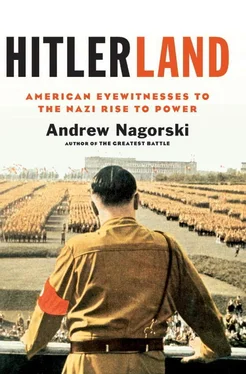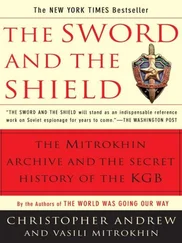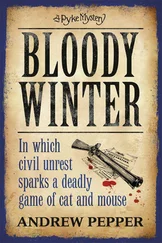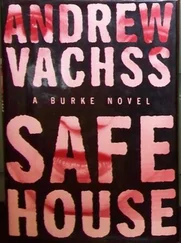While she was still in what she characterized as her “most violent pro-Nazi period,” Martha met a young French diplomat, who began taking her out with her parents’ permission. Not that Martha cared much about such formalities. Although her German male friends warned her that he was a French spy and she considered herself anti-French and pro-German, she was drawn to “the tall boy, romantic and perfect of feature.” When he denounced the militarism of the Nazis, she argued with him—but later she conceded that some of his arguments made her begin “to think a little.” Sylvia Crane, one of Martha’s friends, maintained that her political thinking was always guided by her love life. “She just liked sleeping with attractive men, and that’s how she learned about politics and history,” she said.
Martha was certainly eclectic in her tastes. Early in her stay, she met the Gestapo chief Rudolf Diels. He was a frequent visitor to the Dodds’ residence, often to assure the ambassador that he was doing what he could to prevent violence against Americans. Martha’s father and other diplomats viewed him as more sympathetic to their grievances than other German officials. Nonetheless, he was also presiding over the early concentration camps, and Martha admitted she heard from several people that “at least twelve people a day” were killed during that period. But none of that prevented Martha from going out with him, dancing in nightclubs and taking long drives in the country together. “I was intrigued and fascinated by this human monster of sensitive face and cruel, broken beauty,” she declared. Nor, of course, did it matter that Diels was married; Martha dismissed his wife as “a pathetic passive-looking creature.”
A young Jew who met Martha at several cocktail parties warned her that Diels was using her as protection, probably in some internal Nazi battles. “Martha, you are very silly, and you are playing with fire,” he said. But she wasn’t about to be dissuaded and kept seeing the Gestapo chief. “I was extremely interested in his type and his conversation,” she wrote. “He gave me, consciously and unconsciously, a picture of the backstage workings of espionage that I could have not got anywhere else.” It was a revealing comment that later could be read as an indirect admission about her own spying for a different regime.
Martha was soon infected by Diels’s evident nervousness about his rivals within the party, and in December 1933 even told Messersmith, the U.S. consul general, that he feared for his life. He wanted Messersmith to write a letter to the Nazi authorities praising him, suggesting that he was doing a lot to keep U.S.-German relations on an even keel. Messersmith and Ambassador Dodd sympathized with him but didn’t feel they could write such a letter.
Martha worried both about inadvertently saying something to Diels about her German friends that might lead to their deaths, and about Diels himself. After one late night of dancing, Diels came into the Dodds’ residence for a drink in the library before going home. It was evident he wanted to talk about whatever latest intrigues he had on his mind. Martha grabbed a pillow from the sofa. When Diels asked her what she was doing, she indicated she was going to cover the phone. That prompted a fleeting sinister smile, as Martha recalled, and a nod of approval.
While Martha continued to take such measures, she admitted she got herself into “a nervous state that almost bordered on the hysterical.” She began replaying conversations in her head with various Germans, wondering if they were recorded or overheard. From her second-floor bedroom, she was suddenly prone to hear ominous footsteps on the gravel driveway, see moving shadows, and to assume any popping sound was a gunshot. As for Diels, in the period leading up to the Night of the Long Knives, he was like “a frightened rabbit,” Martha recalled, clinging to her. Diels survived the bloodletting of June 30, 1934, but earlier he lost his post of Gestapo chief, never attaining that prominent a position in the Nazi hierarchy again.
Martha Dodd claimed that a variety of factors—everything from the crudeness of German propaganda to her exposure to a widening circle of friends—transformed her from an apologist for the Nazis into a fervent opponent in the spring of 1934. Not coincidentally, this was also the period when Martha began what was probably her most passionate affair. Her new lover was Boris Vinogradov. In her 1939 memoir Through Embassy Eyes , she never mentioned him by name, but he was “the young secretary in a foreign embassy” who took her to the lakeside beach on June 30. He was a tall, blond, handsome first secretary in the Soviet Embassy, and, because he had served earlier as the press secretary, was well known to American correspondents in Berlin. They found him to be good company when Martha would bring him by Die Taverne, the Italian restaurant where they gathered in the evenings.
The other important new person in Martha’s life was Mildred Harnack, a fellow midwesterner who found herself in Germany. She had met Arvid Harnack, a German exchange student, at the University of Wisconsin and soon married into his distinguished, scholarly Prussian family. In 1929, the couple moved to Germany, and Mildred at first taught classes on American and British literature at the University of Berlin and later at a night school for adults. Watching the impact of the Depression on her students, she noted their sense of weariness since they knew “they had no future.” Like her German husband, she was troubled by the rise of the Nazis, but she was confident that they would fail to seize power. “It is said by people who are capable of estimating the present situation that no such dictatorship as is in Italy can be erected in Germany,” she wrote on July 24, 1932.
Mildred’s confidence flowed from her faith that there was already an alternative model that would serve as the solution to the crisis of the capitalist system. She and Arvid had visited Russia, where she was awed by the atmosphere of “hopefulness and achievement.” She enthusiastically explained in a letter to her mother that the country was “the scene of an enormously important experiment in loving your neighbor as yourself.” Back in Berlin, the Harnacks became regular guests at Soviet Embassy receptions.
Once the Nazis came to power, the Harnacks had to be careful to hide their political views, and Mildred avoided any more pro-Russian commentaries in her letters home. But when she met Martha, the two instantly hit it off. Mildred and Martha, with her new political outlook and Soviet lover, felt free to share their private thoughts with each other. And they were both quick to pass judgment on those who they felt hadn’t seen the light the way they had. Martha professed herself “amazed at the naïveté” of any Americans who still could have profascist leanings, seemingly oblivious to the irony that she would make such a statement so soon after her own conversion.
On May 27, 1934, Mildred, Martha and Boris—along with Heinrich Maria Ledig-Rowohlt, the son of the publisher Ernst Rowohlt—drove to the farm of writer Hans Fallada, whose 1932 novel Little Man, What Now? was a huge bestseller in Germany and a major hit abroad. While the Nazis liked his grim portrayal of life in Weimar Germany, they were highly suspicious of him. Fallada tried to skirt current politics and even sought to ingratiate himself with the Nazis on occasion. Nonetheless, as numerous press attacks on him indicated, the lack of ideology in his books was enough to make the authorities discern an undercurrent of dangerously independent thinking.
But Martha was irritated by Fallada’s decision to concentrate on his life on the farm with his wife and children, and his ostensibly apolitical writing. “He was isolated from life and happy in his isolation,” she wrote reproachfully. From their conversation, she continued, “though I got the impression that he was not and could not be a Nazi—what artist is?—I felt a certain resignation in his attitude.” Mildred was less judgmental, telling her companions that Fallada was a man with a conscience. “He is not happy, he is not a Nazi, he is not hopeless,” she said. In fact, Fallada’s last novel, Every Man Dies Alone , which he wrote right after World War II, would prove to be one of the most powerful fictional portrayals of the horrors of life in Germany under Hitler—and of the terrifying price that anyone paid who dared to resist the Nazis.
Читать дальше











